Catamarans Return to the Olympics
Published on September 17th, 2015
Not long after the Hobie 16 was unleashed on the Southern California beach scene in 1970 did a multihull sailing event get introduced at the 1976 Olympic Games. The Tornado class was chosen, a more technical option, and the event quickly became a strength for the US Sailing Team.
Americans David McFaull and Michael Rothwell promptly rose to the podium to claim the silver medal at those first Games. Their success was followed by American Randy Smyth with crews Jay Glaser (1984, silver) and Keith Notary (1992, silver). However, success soon became spottier as international sailing programs became more sophisticated.
Third time was a charm for American John Lovell who got a silver medal at the 2004 Games with Charlie Ogletree, and Canadians Oskar Johansson/Kevin Stittle gathered the wooden medal at the 2008 Olympics, which would be the final Games for the multihull event.
Since then, the Olympic sailing events has seen some shuffling, with the multihull finally returning to the 2016 Games. So who is the most promising catamaran sailor in North America? It could be 20-year old Taylor Reiss, a student at Webb Institute. Scuttlebutt editor Craig Leweck checks in with Taylor…
Where did sailing begin for you?
I learned to sail during summer sailing courses at St. Andrews Bay Yacht Club in Panama City, FL I enjoyed it so much that I kept coming back, but during this time I shied away from racing. Eventually, I did one dinghy regatta and loved it. Thereafter, I began racing catamarans. Once racing catamarans, my coach, Robbie Daniel, accelerated my learning curve drastically.
How did the attraction to catamarans begin?
I began sailing catamarans with my dad sometime around 2007. My dad would take me out on his Prindle 18-2. As I became more comfortable, I started taking it out without my dad.
You are amassing a pretty good record in the F18 class, one of the elite international catamaran classes in the world. When did you start racing the F18?
My first regatta in the F18 class was the 2008 North American Championship held in Pensacola Beach, FL.
How is the class in the USA?
The F18 class is spread between four major areas: West coast, Great Lakes, North East, and South East. I have raced in other catamaran classes, but am drawn to the F18 due to its stability. For example, last year, during the 2014 F18 National Championships held in Corpus Christi, TX, there were 40 boats racing. I unfortunately missed this race because of school.
You are a 4-time F18 Youth World Champion. What is your record in the open Worlds?
2012- Long Beach, CA, 12th overall
2013- Grosseto, Italy, 16th overall
2014- Bangor, Ireland, 3rd overall
2015- Kiel, Germany, 4th overall
The Olympic boat is now the Nacra 17. How is that different from the F18?
The most obvious difference between the N17 and the F18 are the curved boards on the N17 and the straight boards on the F18. The difference in the boards changes everything.
Any Olympic aspirations?
I have done some sailing with Sarah Lihan in the Nacra 17, and we were campaigning for the 2016 Games, but last year I had to turn my focus either onto a full time Olympic program, or towards a highly demanding school. At that point, school became my focus, and Olympic sailing was not possible any more. Currently, I am rooting for my male sailing partner Matthew Whitehead. He is campaigning on the Nacra 17 with Sarah Newberry.




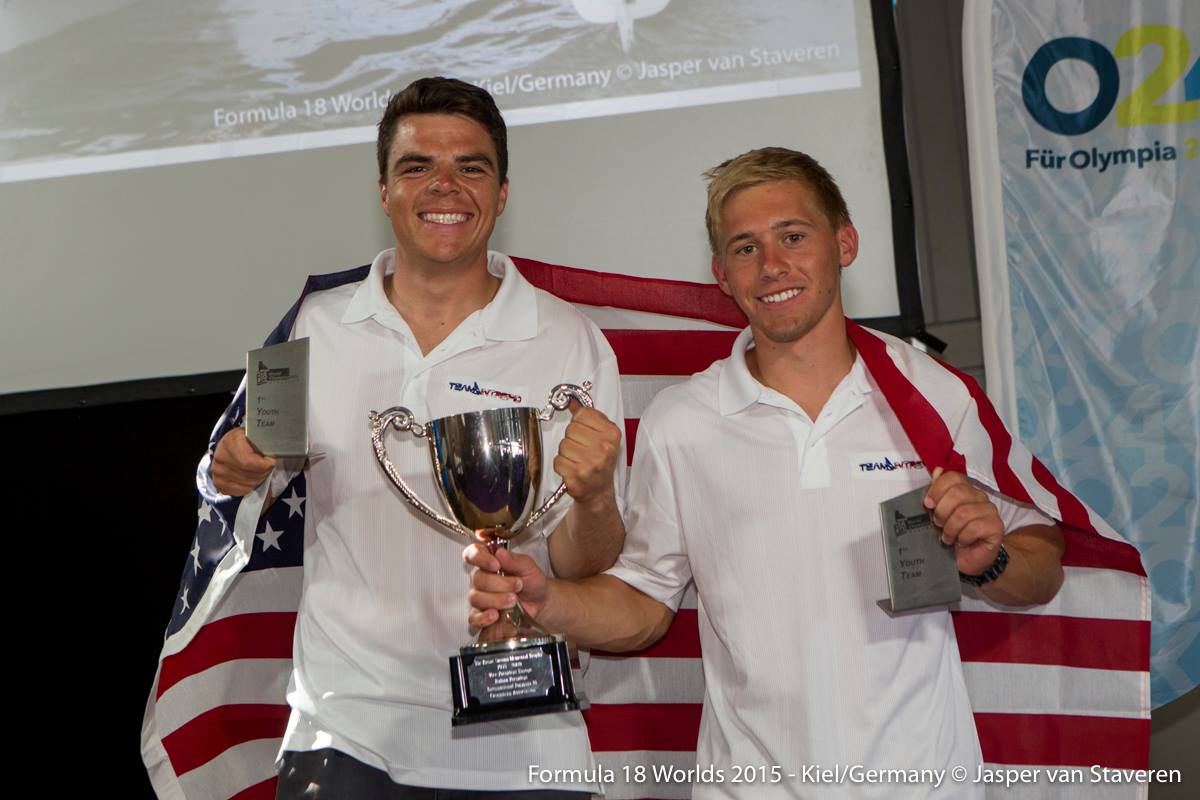

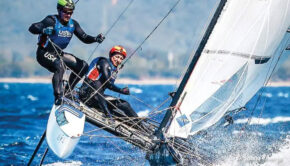
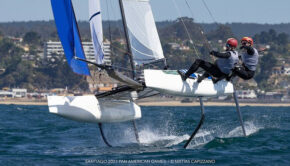
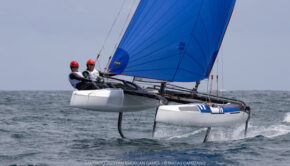
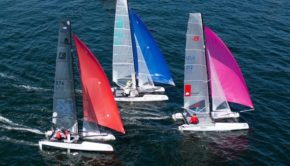
 We’ll keep your information safe.
We’ll keep your information safe.